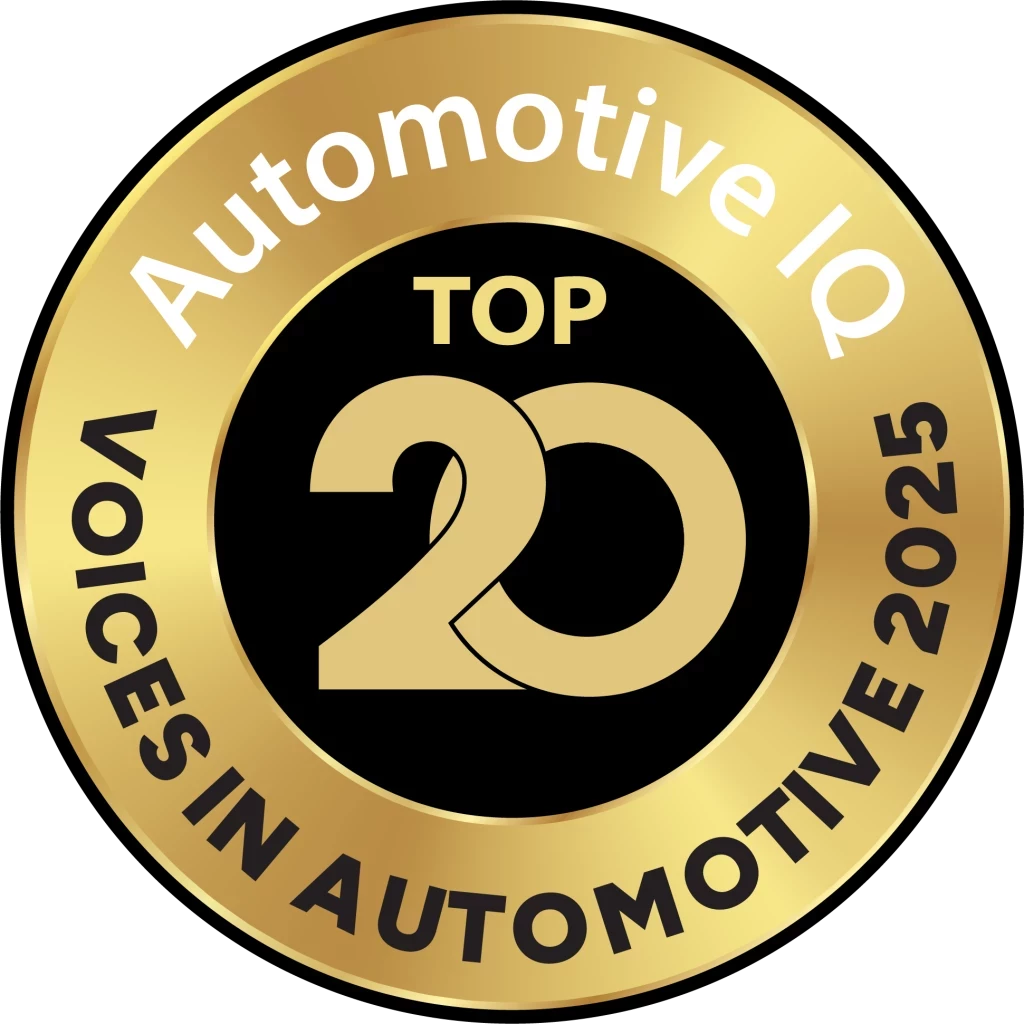Electric Charging - Can Global Grids Withstand an EV Boom?
Add bookmark
Oslo’s fashionable Tøyen’s district is as much a symbol of Norway’s proud cultural past as it is the country’s pioneering future. Located in the center of the capital city, Tøyen, which means ‘fertilized meadow’ has always been a hotbed of creativity and learning. It is home to the botanical gardens, the paleontological, geological and zoological museums. Tøyen, however, is best known for the Munch Musett, a world-famous art gallery showcasing all of the late Edvard Munch’s 1,100 paintings, including his most famous composition ‘The Scream.’

But there’s a building just a stone’s throw away from this famous exhibition house which has been making just as many headlines recently. Tøyen torg is home to Norsk elbilforening or the Norwegian Electric Vehicle Association, an EV owner/member organization which has also been working with governments, OEMs and utilities for the last two decades, to actively pursue a zero emissions future.
In early December, 2016, Norsk elbilforening, the world’s largest EV Association with 40,000 members, announced a major milestone by reporting that Norway had registered its 100,000th electric vehicle. Staggeringly, 15.7 per cent of passenger cars sold last year were BEVs (PHEVs accounted for another 13.4 per cent), and Norsk elbilforening has forecast that the 24,222 BEVs registered last year could increase to 40,000 this year, with the immediate goal being an EV population of 400,000 vehicles by 2020.
Norway, with a population of just 5.27 million people, now has 10 per cent of the world’s EVs. So is this highly-enterprising body, which employs just 14 people, surprised at the increased take-up of BEVs (Battery Electric Vehicles) and PHEVs (Plug-in Electric Vehicles) in Norway?
Speaking from his Oslo offices, Ståle Frydenlund, Norsk elbilforening’s senior PR adviser, said,

“Undoubtedly, Norway has made great strides, but the transition has really just begun – even in Norway. In the short term, our main objective is to quadruple the number of BEVs on Norway’s roads by 2020. But the chief aim by the Government is to totally eliminate fossil-fuel powered vehicles by 2025. To meet this challenge, we are actively influencing and seeking know-how from a number of departments including The Norwegian Water Resources and Energy Directorate, Statkraft (Norway’s National Utility provider) and Statnett, which is responsible for regulating the national grid.”
But with 2,747,483 vehicles currently registered in Norway, 97 per cent of which are still powered by petrol or diesel, how will the dramatic increase in BEVs affect the country’s grid infrastructure?
“We don’t expect there to be any sizeable impact on the network whatsoever,” says Frydenlund, a former journalist who has been working for Norsk elbilforening for three and a half years. “The Norwegian Water Resources and Energy Directorate has found that the national grid as it is today will be able to deliver enough power to charge 1.5 million vehicles. It calculated that 1.5 million BEVs would together use around four terawatt hours (TWh), which translates to only three percent of Norwegian power consumption. It is also worth mentioning that 99 per cent of all power generation in Norway comes from renewable hydropower,” he adds.
Further research carried out by The Norwegian Water Resources and Energy Directorate and Norsk elbilforening has shown that most BEV owners charge their cars at night, which places considerably less demand on the grid.
But, in anticipation of a four-fold increase in EV uptake, what if everyone decides to charge their vehicles at the same time?
Says Frydenlund, “Of course this is a challenge, and in theory if it were to happen in a busy urban area, a densely populated suburb, or in a rural setting where networks are weak, it is possible that the grid could be temporarily affected.
“However, with this in mind, the Norwegian government passed regulation in June 2011 to safeguard the grid and deter BEV owners from doing just that. By January 2019 every household must have a smart meter fitted. These state-of-the-art meters relay data in real-time from customer to grid providing them with accurate pricing. Therefore, the majority of users are likely to only charge their vehicles when demand for power is at its lowest.”
Frydenlund continues “And the grid will be further protected by the fact that it will be possible for any home that generates excess power from solar panels to sell the energy back to the grid. While this is not a new idea, it remains a powerful and effective one. A solar panel might keep a household off the grid during long periods, and an average generation of around 4.000 kWh annually is enough to ensure 20,000-40,000 kilometers of EV driving. This is an idea many EV owners find interesting, and we know for a fact that they are solar market drivers. And the electricity is of course always 100 per cent emission free, which is also very appealing,” he adds.
While Norway’s vision of zero emission future by 2030 has won it many admirers internationally, can this ambitious blueprint be replicated in much larger countries?
Mass U.S electric vehicle adoption: Tangible reality or a distant dream?
Take the USA – the land of the automobile – for example. A quick glance at statistics supplied by The U.S. Department of Energy (DOE) reveals a growing appetite for EVs amongst the American public. According to the DOE, of the 17.5 million passenger cars and light trucks sold last year, while only 160,000 were EVs, EV market share grew by an astonishing 38.8 % from 2015 to 2016.
And, in its Annual Energy Outlook 2017 paper, which was published last week, the U.S. Energy Information Administration (EIA) has forecast a dramatic increase in EV market share in the light vehicle segment, which currently stands at 0.9 %.
In the short-term, the EIA forecasts that “projected sales of light-duty battery electric, plug-in hybrid electric, and hydrogen fuel cell vehicles (will) reach 1.5 million - about 9 % of projected total sales of light-duty vehicles (by 2025)”.
But it is Battery Electric Vehicle penetration that could experience the largest uptick. The EIA predicts that “lower projected battery costs and existing state costs” will see BEV market share increase from just under one per cent to six per cent of total light vehicles sold.
And the DOE’s Alternative Fuels Data Center states that between 2015 and 2016 there was a 35 per cent increase in electric stations (15,527) and charging outlets (39,695) in the United States, which is another clear sign that electricity might be more than a bit-part player in an energy mix dominated by oil & gas.
However, Scott Kelley, a post-doctoral research fellow at the University of Michigan Energy Institute believes that “increased electric vehicle penetration in the United States could be challenged by the current state of the country's electrical grid and dominant modes of electricity production.”
Explains Kelley, who is the author of ‘AFV Refueling Stations and the Complexity of Freeway Interchanges: the Scale Dependency of Network Representation’, “Right now, it would be difficult for the U.S. to mimic Norway’s system, and one of the reasons is that the U.S. does not have a national grid system. Instead, the country relies on regional grid capability.
Kelley, who worked with a Phoenix-based company that was constructing electric vehicle charging networks, continues, “In Arizona, where high demand for air conditioning and other major appliances challenges the grid during peak hours especially in the summer, there was some concern as to whether the state grid infrastructure and transformers has the capacity to handle several thousand BEV owners charging their cars at peak hours.
So what is the solution?
Says Kelley, “In order for renewable electricity generation to really succeed in tandem with EVs, which could help achieve reductions in greenhouse gas emissions from transportation, America would likely need a more intelligent and interconnected grid and better energy storage infrastructure. In the data-centric world that we live in, we need to be able to understand and react to regional electricity demand surges and troughs, too, in real-time. That would require a good amount of collaboration between government agencies, utilities, and private companies. Collectively, they could create, develop and advance a leading-edge system that can take advantage of America’s varying geography and climate. For example, America could benefit from a system that is able to transport energy generated from a New Mexico solar power plant to metropolitan New York quickly, when needed.”
And what would be the consequences of not investing in this next-generation technology?
Kelley says, “It is uncertain that the current infrastructure would be able to cope if demand for BEVs in the USA, over the next few years, mirrors uptake in Norway, the Netherlands or in Belgium.”
UK and Europe: Solving grid gridlock – the key to increased EV penetration?
In the UK, too, which Eurostat forecasts will be the most populous country in western Europe by 2050, and where in 2016 one EV was sold every 14 minutes, the challenges for the National Grid have recently been brought into sharper focus. As part of a £ 290 million package to support low emission vehicles, the UK government allocated £ 80 million to charging infrastructure, which Poppy Welch, the Head of Go Ultra Low, a campaign funded by government and several leading OEMs, believes will have a dramatic effect on EV take-up in the UK.
Says Welch, “With ongoing government incentives and increasing product choice we expect this trend to continue, boosting the number of electric cars on UK roads beyond 100,000 by 2017.”
The Department for Transport (DfT) is also collaborating with some of the UK’s leading engineering companies to ensure that the National Grid is resilient enough to cope with the anticipated surge in electric vehicle ownership over the next decade.
Take Ricardo for example, a global engineering consultancy headquartered in West-Sussex. It is currently working with the UK government on a number of projects relating to grid energy storage.

Says Stephen Doyle, who heads Ricardo’s Hybrid & Electronic Systems Product Group, “While we are not in a position to comment on our government project work, I can say that in Britain and in mainland Europe, one of the greatest challenges is how we develop, manage and maintain local distribution networks. While diversifying our energy mix is an important stepping stone to a zero emission future, the landscape has become fragmented. Local networks now have to cope with a multitude of additional energy sources and demands; windfarms, solar installations and of course EVs that simply weren’t there five years ago. To cope with this, the local grids need to become more flexible and intelligent. I believe that is where the investment will go in the next few years.”
But with 36,907 EVs being registered in the UK last year – a 29 per cent increase on the 2015 total -what short-term measures does Doyle think could ease pressure on the national grid network?
“I believe that in the UK, agile energy storage hubs could be a very effective tool in addressing energy shortfall,” he says, “In the next ten years, it is the most densely populated metropolitan areas, in London, Birmingham and Manchester, that are likely to experience supply issues. From an infrastructure perspective, the issue is that there simply won’t be room, or it won’t be practical or cost effective to dig up a road and install larger cables and transformers. Therefore, high-power mobile energy storage units could be strategically placed at ‘weak-spots’, which could feed into the local energy network when there is a drop in renewable output or sudden increase in demand.”
Storage systems: The cornerstone of smart, flexible energy systems?
But which part of the energy network would be charged with managing these portable storage nerve centers? Would it be the responsibility of the National Grid Electricity Transmission - or in cities north of the border - the Scottish Power Transmission? Or would this high-tech and cost-effective solution be financed and operated by the Distribution Network Operators (DNOs), who own and operate the network of wires which carry electricity to our homes, businesses and local communities?
David Smith, who heads the Energy Networks Association (ENA), would not be drawn on individual roles, but he was keen to emphasize the importance of intelligent storage networks.
“Storage has a large number of applications, including providing balancing services, which can help network operators meet the challenges associated with increased intermittency of Distributed Generation. Storage has an important role to play in a smart, flexible energy system, and network companies are working with Government, the regulator and other stakeholders to explore how the technology can best deliver energy security and value for customers,” he says.
Smart charging for an overworked grid

While it is clear that the UK’s electricity transmission and distribution network operators have many questions to address, one pioneering project, Electric Nation may have some important answers. It is investigating the impact of home charging on their networks.
Funded by the Electricity Distribution Network Operator Western Power Distribution (WPD) through its Network Innovation Allowance, the Electric Nation initiative also draws on the expertise of a number of industry experts including EA Technology, DriveElectric, Lucy Electric GridKey and TRL.
Gill Nowell, a senior consultant for EA Technology, who has worked in the renewable energy sector for the last 17 years, believes that the project, which will be completed in 2019, is necessary to prevent Britain’s ageing grid networks from grinding to a halt.
Nowell explains, “By engaging 500-700 plug-in vehicle drivers in trials, the project is answering the challenge, as evidenced through the My Electric Avenue project, that when local electricity networks supply households with over 4 0% electric vehicle uptake, about a third of these networks across Britain will require potentially costly and disruptive intervention.”
Says Nowell, “With one million plug-in vehicles likely to be registered by 2020, and with UK Government aiming for all cars and vans to be zero emission by 2050, the economic cost of strengthening this local infrastructure will be at least £ 2.2 billion by 2050 if we do nothing to address the problem.”

Continues Nowell, “The Electric Nation study will expand current understanding of the demand impact of charging at home on electricity distribution networks of a diverse range of plug-in electric vehicles - with charge rates of up to 7 kW, and a range of battery sizes from 20 kWh to 80 kWh. We will build a better understanding of how vehicle usage affects charging behavior, and evaluate the reliability and acceptability to customers of controlling the demand for electricity, by not only taking energy from vehicles but transferring it back into the grid. The results of Electric Nation will be of interest and will be communicated to the Great Britain energy/utility community, to UK government, to the automotive and plug-in vehicle infrastructure industry and to the general public.”
But it was ideas sparked and fashioned by the ground-breaking three-year My Electric Avenue pilot, which EA Technology delivered on behalf of Scottish and Southern Electricity Networks, that are the cornerstone of this cutting-edge venture.
Nowell says, “My Electric Avenue trialed the Esprit system. Although never commercialized, it was a breakthrough innovation and in many ways a precursor, which has helped to advance many of the current systems being developed, and those on the market today. We created and tested Esprit from 2013 to 2015 on real electricity networks, with over 100 customers. The idea behind this trailblazing technology was simple. We wanted to find a way for electricity sub-stations and customer charging points to talk to each other in real-time.
So what was the science behind this breakthrough innovation?
Nowell explains, “By fitting a monitor-controller device to the local electricity sub-station, which could communicate local network capacity information via power line carrier to a unit fitted alongside the customer charging point, Esprit was programmed to automatically cycle EV charging activity until the local power network had sufficient capacity.
“Esprit was a prototype to enable initial testing of customer acceptance of charger management, and since then many organizations have developed similar technologies, and I believe that in the decades to come smart demand control systems could be a game-changer for industry, as it would mean installing fewer underground and overhead cabling, which are very costly.”
Nowell, who confirmed that “EA Technology is currently undertaking a number of projects as part of a wide EV-electricity network portfolio”, adds,
“Our aim is to develop and deliver projects using a number of smart charge solutions to support plug-in vehicle uptake on local electricity networks. The ‘sliding scale’ of interventions will include better regulating smart demand control systems, transferring energy from vehicles back to the grid and beefing up local energy infrastructure when there is no other viable solution,” she adds.
Meanwhile…
Back in Tøyen, at Norsk elbilforening’s offices, Ståle Frydenlund tells me that the remedies outlined by Nowell are the key to managing capacity in this fast-changing landscape.
“But it is not just the EV panorama that is changing,” jokes Frydenlund. “The world-famous Edvard Munch museum will soon be relocated to a new waterfront location in Bjørvika.
“Who knows?” he laughs. “Perhaps in 100 years’ time, the tourists will flock to Tøyen to visit our premises.”
With 40,000 members and an ever-increasing list of converts, who would bet against this bold prediction from a dynamic organization which has truly captured the zeitgeist of a nation?
Interested in more? Read the previous aticles in this series here and here!




















